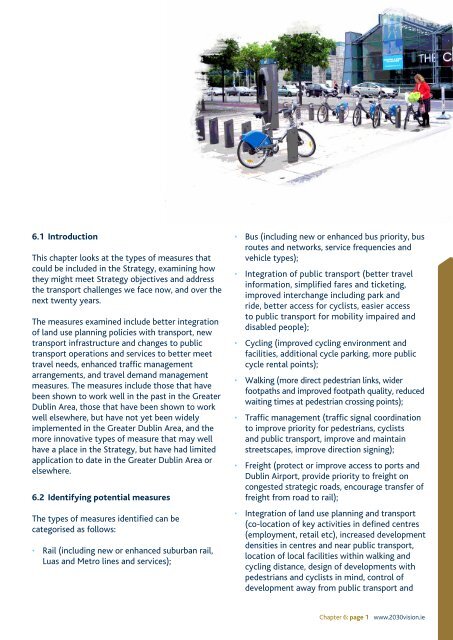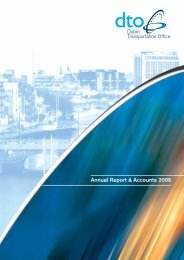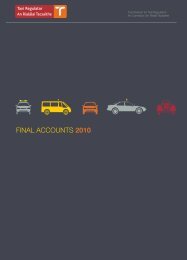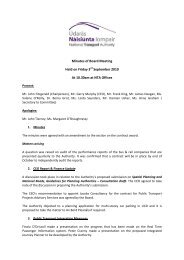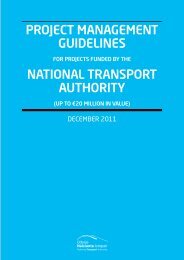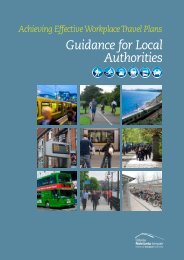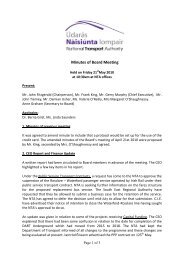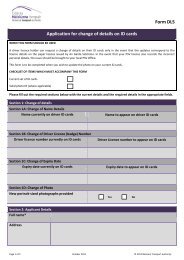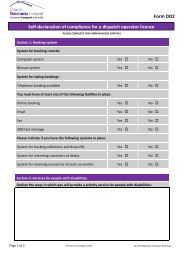Greater Dublin Area Draft Transport Strategy 2011-2030
Greater Dublin Area Draft Transport Strategy 2011-2030
Greater Dublin Area Draft Transport Strategy 2011-2030
- No tags were found...
Create successful ePaper yourself
Turn your PDF publications into a flip-book with our unique Google optimized e-Paper software.
6.1 IntroductionThis chapter looks at the types of measures thatcould be included in the <strong>Strategy</strong>, examining howthey might meet <strong>Strategy</strong> objectives and addressthe transport challenges we face now, and over thenext twenty years.The measures examined include better integrationof land use planning policies with transport, newtransport infrastructure and changes to publictransport operations and services to better meettravel needs, enhanced traffic managementarrangements, and travel demand managementmeasures. The measures include those that havebeen shown to work well in the past in the <strong>Greater</strong><strong>Dublin</strong> <strong>Area</strong>, those that have been shown to workwell elsewhere, but have not yet been widelyimplemented in the <strong>Greater</strong> <strong>Dublin</strong> <strong>Area</strong>, and themore innovative types of measure that may wellhave a place in the <strong>Strategy</strong>, but have had limitedapplication to date in the <strong>Greater</strong> <strong>Dublin</strong> <strong>Area</strong> orelsewhere.6.2 Identifying potential measuresThe types of measures identified can becategorised as follows:• Rail (including new or enhanced suburban rail,Luas and Metro lines and services);• Bus (including new or enhanced bus priority, busroutes and networks, service frequencies andvehicle types);• Integration of public transport (better travelinformation, simplified fares and ticketing,improved interchange including park andride, better access for cyclists, easier accessto public transport for mobility impaired anddisabled people);• Cycling (improved cycling environment andfacilities, additional cycle parking, more publiccycle rental points);• Walking (more direct pedestrian links, widerfootpaths and improved footpath quality, reducedwaiting times at pedestrian crossing points);• Traffic management (traffic signal coordinationto improve priority for pedestrians, cyclistsand public transport, improve and maintainstreetscapes, improve direction signing);• Freight (protect or improve access to ports and<strong>Dublin</strong> Airport, provide priority to freight oncongested strategic roads, encourage transfer offreight from road to rail);• Integration of land use planning and transport(co-location of key activities in defined centres(employment, retail etc), increased developmentdensities in centres and near public transport,location of local facilities within walking andcycling distance, design of developments withpedestrians and cyclists in mind, control ofdevelopment away from public transport andChapter 6: page 1 www.<strong>2030</strong>vision.ie


